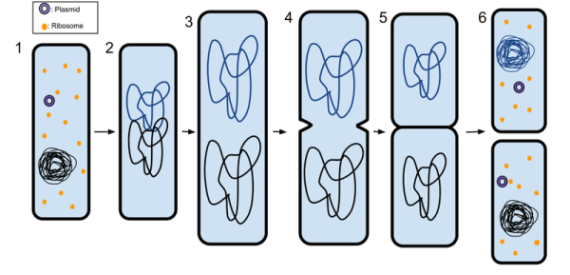Reproduction
Escherichia Coli O157:H7 reproduces like almost all bacteria. Bacteria do not reproduce by a means of sexual reproduction. Instead they reproduce by what is called binary fission. Binary fission creates a clone of the parent cell. You may wonder the process of binary fission. I will explain it briefly now but for a more detailed explanation and how it differs from other reproduction strategies click here. In binary fission the chromosomes duplicate and each go to a different pole (side) of the cell. The cell then cleaves and breaks apart forming two identical cells.
Because binary fission creates clones there would be no genetic variation right? Wrong. When separating, it is common for mutations to occur. In fact the strain O157:H7 actually developed because of a mutation. Another way that genetic variation can occur is through something called parasexual process or horizontal transfer. These variations are what can cause different strains of E. coli. It was thought that E. coli had to be inside the host in order to reproduce, but new data is showing that it is possible that while living on the surface of meats, or in water/soil it is able to reproduce as well. Scientists are still studying this new revelation.
Escherichia coli interacts with many different species. Click here to find out more!

